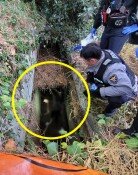Spirit of Female Independence Hero Drifting Near Harbin
Spirit of Female Independence Hero Drifting Near Harbin
Posted July. 27, 2005 03:03,
Professor Kang claimed on July 26 that in 1958 during the construction of Cultural Park on the site of a former foreigners graveyard located in Nan Gang, Harbin, the Chinese government disposed of all of the unidentified graves of the Chosun people. Until now, it had been said that Nam Ja-hyun, a martyr during the Korean independence movement who died in 1933, was buried in the Chosun sector of the Nan Gang Foreigners Graveyard located in Dong Da Zhi St. No.One, Nan Gang, Harbin.
During the time of the removal, those graves that were claimed and identified by relatives were moved to Hwang Shan Graveyard, located 20km away, while martyr Nams grave is presumed to have disappeared.
Seo Myeong-hoon (74), a native historian of Harbin, testified, Nams grave was by the far end of the current childrens theme park inside Cultural Park.
Nam, a native of Yangyang, Kyeongbuk Province, actively participated in movements such as the Independence Movement of Soro-kunjongso against Japan, after losing her husband, a volunteer in the army, at the hands of a Japanese soldier. She was also dubbed as the Mother of the Independence Army due to her achievements in combining militant groups, raising military funds, and promoting the release of Ahn Chang-ho.
It is widely known that in an appeal for national independence, Nam once cut off and sent one of her fingers to the Commission of the League of Nations during their visit to Harbin in 1932. After being arrested in August 1933 for a failed assassination attempt against the Japanese ambassador to Manchuria, she declared that she wouldnt eat the food of the enemy and went on a 15-day hunger strike before passing away.
In 1962, a posthumous presidential medal of the Order of Merit for National Foundation was bestowed upon her, an achievement of the highest rank for a female independence fighter. In 1967, the government installed an epitaph for Nam in the patriots graveyard (No.41) inside the National Memorial Board located in Dongjak-dong, Dongjak-gu, Seoul.
Kwon-Hyo Lee boriam@donga.com




![“설거지해도 그대로”…냄비 ‘무지개 얼룩’ 5분 해결법 [알쓸톡]](https://dimg.donga.com/c/138/175/90/1/wps/NEWS/IMAGE/2026/01/15/133164664.3.png)


